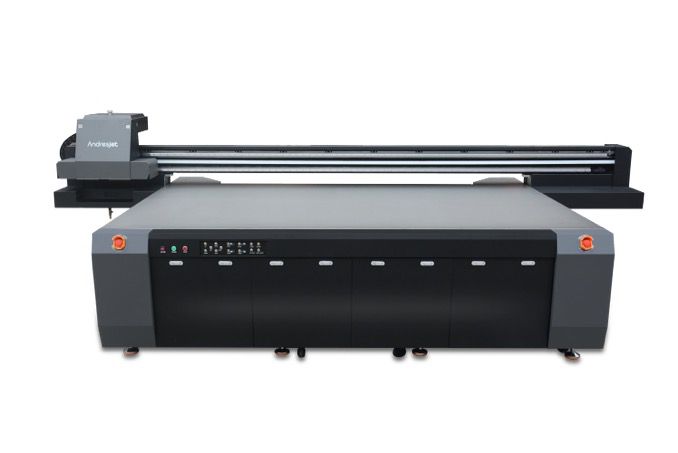How to Troubleshoot Common Problems in UV Flatbed Printing?
How to Troubleshoot Common Problems in UV Flatbed Printing?
UV flatbed printing, a popular technology in the digital printing industry, offers high-quality prints on various materials due to its versatility and efficiency. However, like any other printing method, it is not immune to technical issues that can disrupt production and affect print quality. In this article, we will explore common problems encountered in UV flatbed printing and provide effective troubleshooting steps to help you overcome these challenges.

1. Print Quality Issues
One of the most common problems in UV flatbed printing is poor print quality. This can manifest as blurry images, banding, or color inaccuracies.
Troubleshooting Steps:
Check Ink Levels and Quality: Ensure that all ink cartridges are properly filled and not expired. Low ink levels or dried-out ink can significantly affect print quality.
Calibrate the Printer: Regular calibration ensures that the printer is accurately interpreting color data. Follow the manufacturer’s guidelines for calibration procedures.
Clean the Print Head: Over time, the print head can accumulate dust and debris, leading to clogged nozzles. Use a lint-free cloth and mild cleaning solution to gently clean the print head.
Adjust Print Settings: Incorrect print settings can also result in quality issues. Check the resolution, print speed, and ink density settings to ensure they match the job requirements.
2. Ink Curing Problems
UV flatbed printers use UV light to cure the ink instantly after it is deposited onto the material. If the ink does not cure properly, it can result in smears, tackiness, or poor adhesion.
Troubleshooting Steps:
Inspect the UV Lamps: Ensure that the UV lamps are functioning correctly and are not due for replacement. Lamps that have degraded can reduce their curing efficiency.
Adjust Lamp Intensity and Speed: Depending on the material and ink type, you may need to adjust the intensity of the UV lamps or slow down the printing speed to allow for proper curing.
Check for Obstructions: Make sure there are no obstructions in the path of the UV lamps, such as dust or debris on the reflectors, which can reduce the effectiveness of the curing process.
3. Material Adhesion Issues
If the printed image does not adhere properly to the substrate, it can lead to peeling, cracking, or fading.
Troubleshooting Steps:
Choose the Right Material: Ensure that the material you are printing on is compatible with UV inks. Some materials require pretreatment or special coatings to improve ink adhesion.
Pretreat the Material: If necessary, use a pretreatment solution to enhance ink adhesion. This can involve applying a primer or using an adhesion promoter specifically designed for UV inks.
Adjust Ink Settings: Increase the ink density or adjust the print mode to ensure better adhesion. Some printers offer specific settings for different materials.
4. Software and File Issues
Problems with the printer’s software or the print files can cause printing errors, such as missing elements, distorted images, or print jobs that fail to start.
Troubleshooting Steps:
Update Printer Drivers and Software: Ensure that your printer’s drivers and software are up to date. Manufacturers often release updates to address bugs and improve performance.
Check File Compatibility: Make sure the print files are in a compatible format and meet the printer’s specifications. Convert files to the recommended format if necessary.
Restart the Printer and Computer: Sometimes, a simple restart can resolve software-related issues by clearing temporary files and resetting the system.
5. Mechanical Issues
Mechanical problems, such as paper jams, misaligned print heads, or motor failures, can disrupt the printing process.
Troubleshooting Steps:
Clear Paper Jams: Follow the manufacturer’s instructions to carefully clear any paper jams. Avoid using excessive force, which could damage the printer.
Check Print Head Alignment: Use the printer’s built-in alignment tools to ensure the print head is correctly positioned. Misalignment can cause print quality issues.
Inspect for Wear and Tear: Regularly inspect the printer for signs of wear and tear, such as loose screws, worn belts, or damaged components. Replace any faulty parts promptly.
6. Environmental Factors
Temperature and humidity can affect UV flatbed printing, causing ink to dry too quickly or not cure properly.
Troubleshooting Steps:
Control the Environment: Maintain a stable temperature and humidity level in the printing area. Use climate control equipment if necessary to keep conditions within the recommended range.
Monitor Ink Viscosity: Changes in temperature can affect ink viscosity. Adjust the ink settings or use temperature-controlled ink systems to maintain consistent viscosity.
Conclusion
UV flatbed printing offers numerous advantages, but it is not without challenges. By understanding the common problems that can arise and following the troubleshooting steps outlined above, you can minimize downtime, improve print quality, and optimize your printing process. Regular maintenance, proper material selection, and attention to detail are key to achieving consistent and reliable results in UV flatbed printing. Remember, when in doubt, consult the printer’s manual or contact the manufacturer’s technical support for further assistance. With the right knowledge and tools, you can overcome any obstacle and maximize the potential of your UV flatbed printer.
